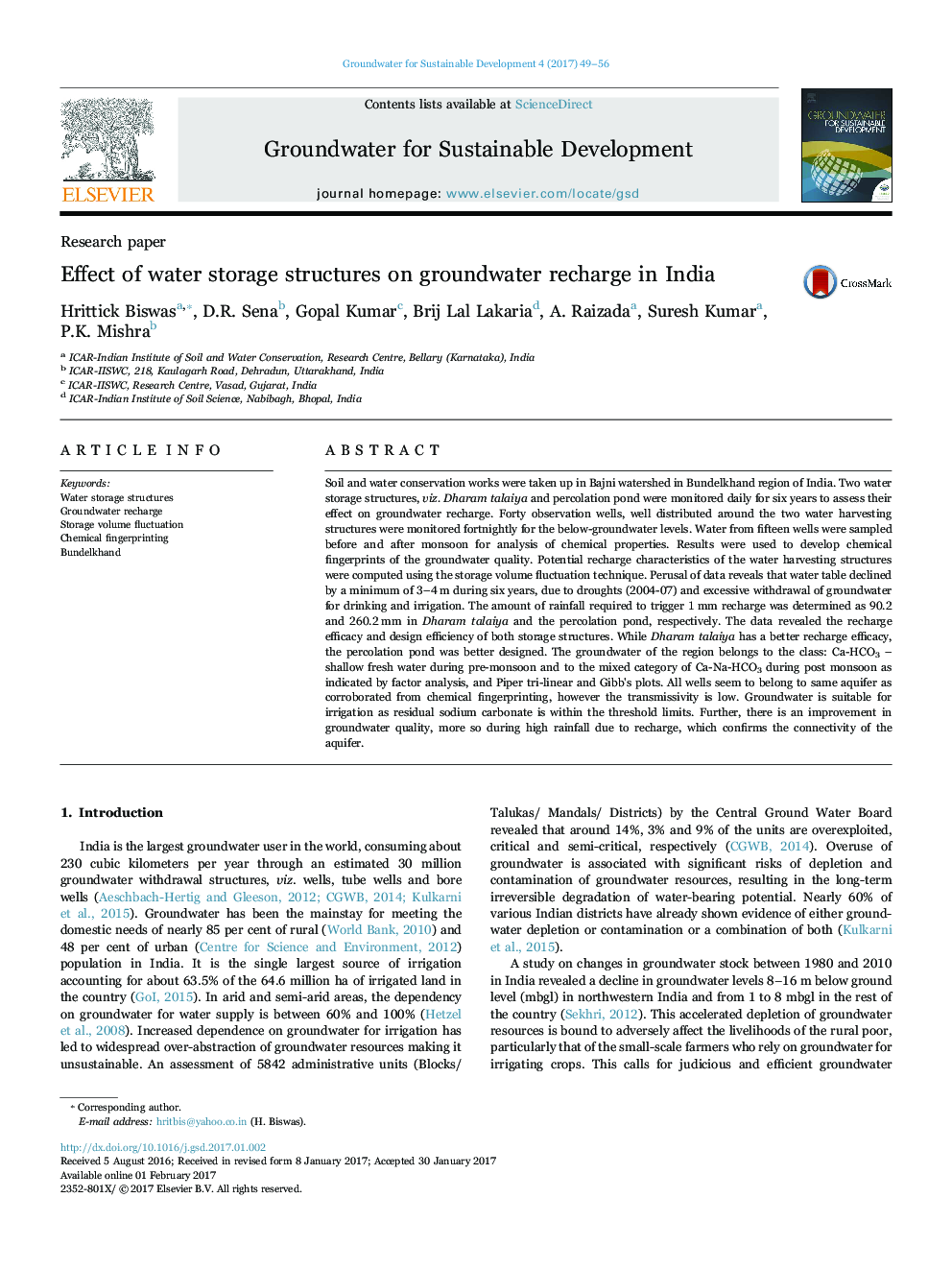| Article ID | Journal | Published Year | Pages | File Type |
|---|---|---|---|---|
| 5757219 | Groundwater for Sustainable Development | 2017 | 8 Pages |
Abstract
Soil and water conservation works were taken up in Bajni watershed in Bundelkhand region of India. Two water storage structures, viz. Dharam talaiya and percolation pond were monitored daily for six years to assess their effect on groundwater recharge. Forty observation wells, well distributed around the two water harvesting structures were monitored fortnightly for the below-groundwater levels. Water from fifteen wells were sampled before and after monsoon for analysis of chemical properties. Results were used to develop chemical fingerprints of the groundwater quality. Potential recharge characteristics of the water harvesting structures were computed using the storage volume fluctuation technique. Perusal of data reveals that water table declined by a minimum of 3-4Â m during six years, due to droughts (2004-07) and excessive withdrawal of groundwater for drinking and irrigation. The amount of rainfall required to trigger 1Â mm recharge was determined as 90.2 and 260.2Â mm in Dharam talaiya and the percolation pond, respectively. The data revealed the recharge efficacy and design efficiency of both storage structures. While Dharam talaiya has a better recharge efficacy, the percolation pond was better designed. The groundwater of the region belongs to the class: Ca-HCO3 - shallow fresh water during pre-monsoon and to the mixed category of Ca-Na-HCO3 during post monsoon as indicated by factor analysis, and Piper tri-linear and Gibb's plots. All wells seem to belong to same aquifer as corroborated from chemical fingerprinting, however the transmissivity is low. Groundwater is suitable for irrigation as residual sodium carbonate is within the threshold limits. Further, there is an improvement in groundwater quality, more so during high rainfall due to recharge, which confirms the connectivity of the aquifer.
Related Topics
Life Sciences
Environmental Science
Pollution
Authors
Hrittick Biswas, D.R. Sena, Gopal Kumar, Brij Lal Lakaria, A. Raizada, Suresh Kumar, P.K. Mishra,
